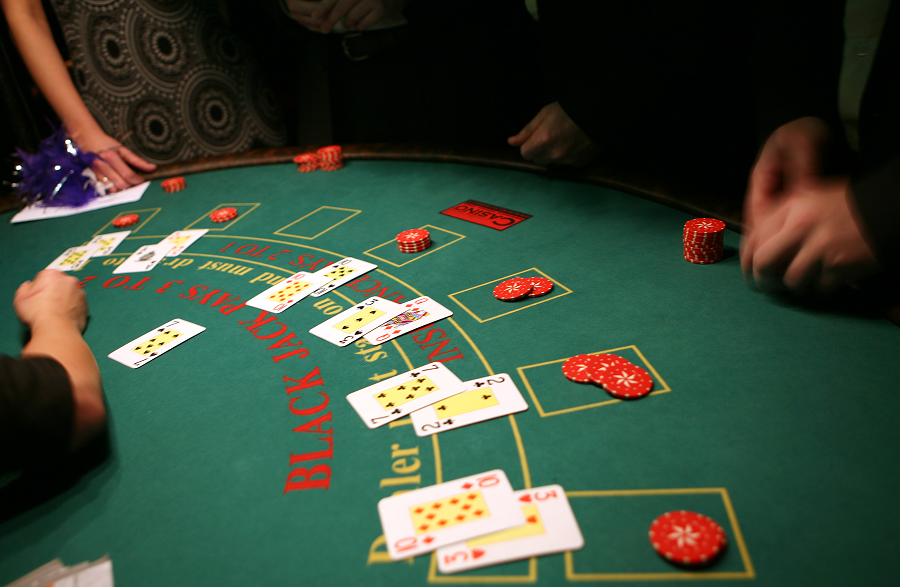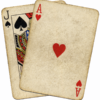Blackjack is the title of the most favoured casino table game in North America and ranks among the top casino games globally. You might be familiar with the basics of blackjack, but are you skilled at playing it proficiently? Are you keen on boosting your casino earnings by mastering blackjack tactics? If you handle your cards wisely, you might accumulate enough funds to enjoy the NBA game with the front seats.

Сasino Earnings by Mastering Blackjack Tactics
Blackjack tactics inform you of the optimal move to increase your profits. It advises you on the action to take based on your hand and the dealer’s visible card. By flawlessly adhering to the strategies outlined in this guide, you can diminish the casino’s edge to less than 0.5%, making blackjack the most favourable game for the player in a casino. Flawless blackjack tactics have been established through probability analysis and computer simulations, which have identified the most advantageous move in each scenario.
In this piece, I will elucidate impeccable blackjack tactics and demonstrate how to leverage them to your benefit. While I emphasize casino play, the same strategies apply to online or home games.
Blackjack Basic Rules
The objective of blackjack is to outdo the dealer’s hand without exceeding a total of 21. Before dealing with cards, players place their wagers.
Each participant begins with two cards facing upward. Face cards carry a value of 10. Aces possess a value of 1 or 11, depending on which results in a superior hand. One of the dealer’s two cards remains concealed until the very conclusion when all players have finished their hands.
You can request an additional card (hit) or maintain your existing hand (stand). You can continue hitting until you are content with your hand or you surpass 21 (bust). Should you bust, the dealer emerges victorious, regardless of the dealer’s ultimate hand. The dealer is obliged to keep hitting until her cards amount to 17 or more.
It would help if you comprehended these blackjack expressions to determine the appropriate action for each scenario. I have arranged the terms alphabetically.
Alphabetically Blackjack Terms
Blackjack: The most favourable hand in blackjack. It comprises an ace and a card worth 10. In most casinos, blackjack pays 3:2. For instance, if you wager $10, securing blackjack yields $15.
Bust: Going beyond 21 is considered busting. As previously mentioned, busting results in an automatic loss.
Double Down/Doubling: Double down or double entails a player placing an additional wager equivalent to their initial bet and obtaining only one more card. Doubling down is possible solely with your first two cards. For example, if you bet $5 and receive an 11, you can place another $5 bet and get one more card. You can only hit again if you get a two or a 10.
Hard/Hard Hand: Any hand lacking an ace that can be valued as 11. A 10 and a 7 compose a hard 17.
Hit: Requesting an additional card is known as hitting.
Insurance: When the dealer displays an ace, the player can make a side bet of up to half their original wager. If your dealer has a blackjack, the insurance bet will pay 2 to 1. If your dealer does not have a blackjack, the insurance bet will be lost. Based on probability, insurance should never be taken.
Push: A push occurs when your hand ties with the dealer, and you retain your initial wager. For example, if you and the dealer possess 19, you can easily go for a push.
Soft Hand: A soft hand is considered a hand with an ace valued at 11 rather than 1—for instance, an authority and a 6 form a soft 17. Soft hands allow for more aggressive play, as there is zero risk of going bust. When you hit on a soft 17 and obtain a 5, the ace will be valued at 1, resulting in 12.
Split: When players receive two identical cards, they can divide them into two different hands by placing an additional wager equivalent to their initial bet. For instance, if you bet $10 and are dealt two 8’s for an additional $10, you can separate your hand into two individual hands, each containing one 8.
Stand/Stay: To stand or stay means maintaining your current hand and refraining from requesting other cards.
Surrender: Surrendering is conceding defeat before discovering the dealer’s outcome. You forfeit your hand and reclaim half of your original bet when you surrender. Surrendering is the most favourable option when it is highly probable that you’ll lose based on your hand and the dealer’s visible card. Regrettably, numerous casinos do not provide the opportunity to surrender.
Blackjack Strategy Charts
To master your blackjack gameplay and entirely reduce the house edge, there’s a significant amount to memorize. However, if you can commit the fundamental blackjack strategy guidelines to memory, you’ll be far ahead of the beginner player.
Adhering to these guidelines will only sometimes result in the ideal move, but it will nearly always be the case. As mentioned, these rules are significantly more straightforward to remember than impeccable blackjack strategy. Compared to absolutely perfect blackjack execution, following these simple rules will only cost you about one hand in many hours of play.
Blackjack Strategy Chart – Basic
Here are the charts that outline basic tactics. They instruct you on the actions to take based on the value of your hand (left column) and the dealer’s visible card (right two columns).
| Hard | 2 to 6 | 7 to A |
|---|---|---|
| 4 to 8 | HIT | HIT |
| 9 | Double | HIT |
| 10 to 11 | Double | Double if more then dealer has. |
| 12 to 16 | Stand | HIT |
| 17 to 21 | Stand | Stand |
| Soft | 2 to 6 | 7 to A |
|---|---|---|
| 13 to 15 | HIT | HIT |
| 16 to 18 | Double | HIT |
| 19 to 21 | Stand | Stand |
| Split (Yes/No) | 2 to 6 | 7 to A |
|---|---|---|
| 2/2, 3/3, 6/6, 7/7, 9/9 | YES | NO |
| 8/8, A/A | YES | YES |
| 4/4, 5/5, 10/10 | NO | NO |
Supplementary Guidelines Besides the blackjack strategy charts presented above, bear in mind these additional Blackjack rules:
- Surrender if you possess a 16, and the dealer displays a 10. If the table doesn’t permit surrendering, then hit.
- If the strategy suggests doubling, and it is not allowed, then choose hit, except if you have a soft 18.
- Never opt for insurance. When the dealer reveals an ace, the player can place a side wager of up to half their initial bet. If the dealer has blackjack, the insurance is going to pay 2 to 1. If the dealer doesn’t have a blackjack, the insurance bet is forfeited.
- Likewise, never accept even money when you attain blackjack. If you’re dealt a blackjack, and the dealer shows an ace, you’ll be offered an even money payout if the dealer has blackjack. For instance, if you wager $10, accepting even money will result in a $10 win instead of the $15 payout for a 3:2 ratio. If you refuse the even money and the dealer has blackjack, you’ll push, and you’ll merely recover your original bet.
Impeccable Blackjack Strategy Adhering to the fundamental strategy will almost always lead you to make the correct move; however, there will be instances when it falls short. If you genuinely aim to become a blackjack master, following the basic strategy won’t suffice.
The impeccable blackjack strategy charts are derived from slightly varying game versions. Blackjack can be played using a single deck or 4-8 tiers. The majority of casinos I’ve visited employ a single deck or utilize six decks. Furthermore, some casinos necessitate the dealer to stand with a soft 17, while others require the dealer to hit with a soft 17. If the dealer must stand with a soft 17, it will result in more favourable odds for you.
Impeccable Blackjack Strategy Charts Here are the charts you need to commit to memory to perfect your blackjack strategy. The numbers running horizontally at the top of the chart signify the card the dealer is displaying, and the numbers in the leftmost column represent the value of your hand.
It is crucial to understanding the symbols that are used in the strategy charts and remember them:
- H= Hit
- S= Stand
- Dh= Double down if allowed. If not hit
- Ds= Double down if allowed. If not stand
- Rh= Surrender if allowed. If not hit
- Rs= Surrender if allowed. If not stand
- Rp= Surrender if allowed. If not split
- P= Split
- Ph= Split if double after hit is allowed. If not hit
- Pd= Split if double after hit is allowed. If not double
- Ps= Split if double after hit is allowed. If not stand
Dealer Stands on Soft 17 (Single Desk)
| Hard | 2 | 3 | 4 | 5 | 6 | 7 | 8 | 9 | 10 | A |
|---|---|---|---|---|---|---|---|---|---|---|
| 5-7 | H | H | H | H | H | H | H | H | H | H |
| 8 | H | H | H | Dh | Dh | H | H | H | H | H |
| 9 | Dh | Dh | Dh | Dh | Dh | H | H | H | H | H |
| 10 | Dh | Dh | Dh | Dh | Dh | Dh | Dh | Dh | H | H |
| 11 | Dh | Dh | Dh | Dh | Dh | Dh | Dh | Dh | Dh | Dh |
| 12 | H | H | S | S | S | H | H | H | H | H |
| 13 | S | S | S | S | S | H | H | H | H | H |
| 14 | S | S | S | S | S | H | H | H | H | H |
| 15 | S | S | S | S | S | H | H | H | H | H |
| 16 | S | S | S | S | S | H | H | H | Rh | Rh |
| 17+ | S | S | S | S | S | S | S | S | S | S |
| Soft | 2 | 3 | 4 | 5 | 6 | 7 | 8 | 9 | 10 | A |
|---|---|---|---|---|---|---|---|---|---|---|
| 13 | H | H | Dh | Dh | Dh | H | H | H | H | H |
| 14 | H | H | Dh | Dh | Dh | H | H | H | H | H |
| 15 | H | H | Dh | Dh | Dh | H | H | H | H | H |
| 16 | H | H | Dh | Dh | Dh | H | H | H | H | H |
| 17 | Dh | Dh | Dh | Dh | Dh | H | H | H | H | H |
| 18 | S | Ds | Ds | Ds | Ds | S | S | H | H | S |
| 19 | S | S | S | S | Ds | S | S | S | S | S |
| 20 | S | S | S | S | S | S | S | S | S | S |
| Splits | 2 | 3 | 4 | 5 | 6 | 7 | 8 | 9 | 10 | A |
|---|---|---|---|---|---|---|---|---|---|---|
| 2,2 | Ph | P | P | P | P | P | H | H | H | H |
| 3,3 | Ph | Ph | P | P | P | P | Ph | H | H | H |
| 4,4 | H | H | Ph | Pd | Pd | H | H | H | H | H |
| 6,6 | P | P | P | P | P | Ph | H | H | H | H |
| 7,7 | P | P | P | P | P | P | Ph | H | Rs | H |
| 8,8 | P | P | P | P | P | P | P | P | P | P |
| 9,9 | P | P | P | P | P | S | P | P | S | S |
| A,A | P | P | P | P | P | P | P | P | P |
Dealer Hits on Hard 17 (Single Desk)
| Hard | 2 | 3 | 4 | 5 | 6 | 7 | 8 | 9 | 10 | A |
|---|---|---|---|---|---|---|---|---|---|---|
| 4-7 | H | H | H | H | H | H | H | H | H | H |
| 8 | H | H | H | Dh | Dh | H | H | H | H | H |
| 9 | Dh | Dh | Dh | Dh | Dh | H | H | H | H | H |
| 10 | Dh | Dh | Dh | Dh | Dh | Dh | Dh | Dh | H | H |
| 11 | Dh | Dh | Dh | Dh | Dh | Dh | Dh | Dh | Dh | Dh |
| 12 | H | H | S | S | S | H | H | H | H | H |
| 13 | S | S | S | S | S | H | H | H | H | H |
| 14 | S | S | S | S | S | H | H | H | H | H |
| 15 | S | S | S | S | S | H | H | H | H | Rh |
| 16 | S | S | S | S | S | H | H | H | Rh | Rh |
| 17 | S | S | S | S | S | S | S | S | S | Rs |
| 18+ | S | S | S | S | S | S | S | S | S | S |
| Soft | 2 | 3 | 4 | 5 | 6 | 7 | 8 | 9 | 10 | A |
|---|---|---|---|---|---|---|---|---|---|---|
| 13 | H | H | Dh | Dh | Dh | H | H | H | H | H |
| 14 | H | H | Dh | Dh | Dh | H | H | H | H | H |
| 15 | H | H | Dh | Dh | Dh | H | H | H | H | H |
| 16 | H | H | Dh | Dh | Dh | H | H | H | H | H |
| 17 | Dh | Dh | Dh | Dh | Dh | H | H | H | H | H |
| 18 | S | Ds | Ds | Ds | Ds | S | S | H | H | S |
| 19 | S | S | S | S | Ds | S | S | S | S | S |
| 20 | S | S | S | S | S | S | S | S | S | S |
| Splits | 2 | 3 | 4 | 5 | 6 | 7 | 8 | 9 | 10 | A |
|---|---|---|---|---|---|---|---|---|---|---|
| 2,2 | Ph | P | P | P | P | P | H | H | H | H |
| 3,3 | Ph | Ph | P | P | P | P | Ph | H | H | H |
| 4,4 | H | H | Ph | Ph | Ph | H | H | H | H | H |
| 6,6 | P | P | P | P | P | Ph | H | H | H | H |
| 7,7 | P | P | P | P | P | P | Ph | H | Rs | Rh |
| 8,8 | P | P | P | P | P | P | P | P | P | P |
| 9,9 | P | P | P | P | P | S | P | P | S | Ps |
| A,A | P | P | P | P | P | P | P | P | P | P |
These are the ideal strategy charts for single-deck blackjack. The initial set illustrates what to do in case the dealer must stand on a soft 17, while the second set details the plan if the dealer is expected to go for a hit on a soft 17. Each pack contains three charts depending on whether your hand is hard, soft, or split.
4- to 8-Deck Blackjack Charts
The most prevalent multi-deck blackjack I’ve encountered is six-deck, but the same tactics apply for 4-8 decks. You’ll observe that the charts are strikingly similar to those for a single deck. Once again, the first set is for tables where the dealer should stand on a soft 17, and the second one is a set for tables where the dealer must hit on a soft 17. Each group comprises three charts for hard, soft, and split hands.
- How to Master These Blackjack Techniques You might be overwhelmed by the number of charts and the information you need to memorize to perfect your blackjack performance. Begin by learning the basic blackjack strategy! Afterward, if you wish, you can progress to a flawless system.
- If you have a very limited time to study, I suggest sticking with the fundamental blackjack strategy. Remember that you’ll almost always make the correct move with the basic strategy, and the occasional errors you might make won’t be too costly.
- Some casinos permit you to consult blackjack charts while playing, so you can print them out and reference them during gameplay. However, other players might become irritated if you consistently check your charts.
- If you aim to learn impeccable blackjack strategy, I recommend learning one chart at a time. Additionally, if you know, you’ll be playing a specific type of blackjack (for example, six decks, and the dealer hits on soft 17) at a casino, concentrate solely on the charts relevant to the game you’ll be participating in.
Dealer Stands on Soft 17 (4-8 Desks)
| Hard | 2 | 3 | 4 | 5 | 6 | 7 | 8 | 9 | 10 | A |
|---|---|---|---|---|---|---|---|---|---|---|
| 4-8 | H | H | H | H | H | H | H | H | H | H |
| 9 | H | Dh | Dh | Dh | Dh | H | H | H | H | H |
| 10 | Dh | Dh | Dh | Dh | Dh | Dh | Dh | Dh | H | H |
| 11 | Dh | Dh | Dh | Dh | Dh | Dh | Dh | Dh | Dh | H |
| 12 | H | H | S | S | S | H | H | H | H | H |
| 13 | S | S | S | S | S | H | H | H | H | H |
| 14 | S | S | S | S | S | H | H | H | H | H |
| 15 | S | S | S | S | S | H | H | H | Rh | H |
| 16 | S | S | S | S | S | H | H | Rh | Rh | Rh |
| 17+ | S | S | S | S | S | S | S | S | S | S |
| Soft | 2 | 3 | 4 | 5 | 6 | 7 | 8 | 9 | 10 | A |
|---|---|---|---|---|---|---|---|---|---|---|
| 13 | H | H | H | Dh | Dh | H | H | H | H | H |
| 14 | H | H | H | Dh | Dh | H | H | H | H | H |
| 15 | H | H | Dh | Dh | Dh | H | H | H | H | H |
| 16 | H | Dh | Dh | Dh | Dh | H | H | H | H | H |
| 17 | H | Dh | Dh | Dh | Dh | H | H | H | H | H |
| 18 | S | Ds | Ds | Ds | Ds | S | S | H | H | S |
| 19+ | S | S | S | S | S | S | S | S | S | S |
| Splits | 2 | 3 | 4 | 5 | 6 | 7 | 8 | 9 | 10 | A |
|---|---|---|---|---|---|---|---|---|---|---|
| 2,2 | Ph | Ph | P | P | P | P | H | H | H | H |
| 3,3 | Ph | Ph | P | P | P | P | H | H | H | H |
| 4,4 | H | H | H | Ph | Ph | H | H | H | H | H |
| 6,6 | Ph | P | P | P | P | H | H | H | H | H |
| 7,7 | P | P | P | P | P | P | H | H | H | H |
| 8,8 | P | P | P | P | P | P | P | P | P | P |
| 9,9 | P | P | P | P | P | S | P | P | S | S |
| A,A | P | P | P | P | P | P | P | P | P | P |
Dealer Hits on Soft 17 (4-8 Desks)
| Hard | 2 | 3 | 4 | 5 | 6 | 7 | 8 | 9 | 10 | A |
|---|---|---|---|---|---|---|---|---|---|---|
| 4-8 | H | H | H | H | H | H | H | H | H | H |
| 9 | H | Dh | Dh | Dh | Dh | H | H | H | H | H |
| 10 | Dh | Dh | Dh | Dh | Dh | Dh | Dh | Dh | H | H |
| 11 | Dh | Dh | Dh | Dh | Dh | Dh | Dh | Dh | Dh | Dh |
| 12 | H | H | S | S | S | H | H | H | H | H |
| 13 | S | S | S | S | S | H | H | H | H | H |
| 14 | S | S | S | S | S | H | H | H | H | H |
| 15 | S | S | S | S | S | H | H | H | Rh | Rh |
| 16 | S | S | S | S | S | H | H | Rh | Rh | Rh |
| 17 | S | S | S | S | S | S | S | S | S | Rs |
| 18+ | S | S | S | S | S | S | S | S | S | S |
| Soft | 2 | 3 | 4 | 5 | 6 | 7 | 8 | 9 | 10 | A |
|---|---|---|---|---|---|---|---|---|---|---|
| 13 | H | H | H | Dh | Dh | H | H | H | H | H |
| 14 | H | H | H | Dh | Dh | H | H | H | H | H |
| 15 | H | H | Dh | Dh | Dh | H | H | H | H | H |
| 16 | H | H | Dh | Dh | Dh | H | H | H | H | H |
| 17 | H | Dh | Dh | Dh | Dh | H | H | H | H | H |
| 18 | Ds | Ds | Ds | Ds | Ds | S | S | H | H | H |
| 19 | S | S | S | S | Ds | S | S | S | S | S |
| 20+ | S | S | S | S | S | S | S | S | S | S |
| Splits | 2 | 3 | 4 | 5 | 6 | 7 | 8 | 9 | 10 | A |
|---|---|---|---|---|---|---|---|---|---|---|
| 2,2 | Ph | Ph | P | P | P | P | H | H | H | H |
| 3,3 | Ph | Ph | P | P | P | P | H | H | H | H |
| 4,4 | H | H | H | Ph | Ph | H | H | H | H | H |
| 6,6 | Ph | P | P | P | P | H | H | H | H | H |
| 7,7 | P | P | P | P | P | P | H | H | H | H |
| 8,8 | P | P | P | P | P | P | P | P | P | Rp |
| 9,9 | P | P | P | P | P | S | P | P | S | S |
| A,A | P | P | P | P | P | P | P | P | P | P |
Moreover, once you believe you’ve mastered the blackjack charts, you can reinforce your impeccable strategy by ingraining it in your memory through playing many hands and evaluating your knowledge. If you need to remember your ideal system while playing, use a basic plan.
Lastly, remember that you want to engage in the blackjack games that provide the most favourable odds. Numerous blackjack variations at casinos can affect your winning chances.
The optimal version of blackjack will permit doubling, doubling after splitting, splitting, and surrendering. If these options aren’t allowed, your winning odds will be reduced. Most are typically offered, but I have not encountered many casinos that permit surrendering.
Furthermore, your odds will improve if the dealer must stand on a soft 17 instead of hitting on a soft 17. Finally, you want a table that pays blackjack 3:2 as opposed to a lower payout (sometimes 6:5) or even money.
Blackjack Software
Blackjack charts are essential tools for players looking to improve their gameplay and increase their chances of winning the game. These charts visually represent the optimal playing strategy for every possible combination of the player’s hand and the dealer’s upcard. Players can use a blackjack chart to make more informed decisions on when to hit, stand, double down, or split their cards, depending on the situation.
Here’s a simple text-based Blackjack emulator in Python:
| import random def deal_card(): cards = [2, 3, 4, 5, 6, 7, 8, 9, 10, 10, 10, 10, 11] return random.choice(cards) def calculate_score(hand): score = sum(hand) if score > 21 and 11 in hand: hand.remove(11) hand.append(1) return sum(hand) def blackjack(): player_hand = [deal_card(), deal_card()] dealer_hand = [deal_card(), deal_card()] while True: player_score = calculate_score(player_hand) dealer_score = calculate_score(dealer_hand) print(f”Your hand: {player_hand}, current score: {player_score}”) print(f”Dealer’s first card: {dealer_hand[0]}”) if player_score == 21 or dealer_score == 21: break action = input(“Type ‘h’ to hit, ‘s’ to stand: “).lower() if action == ‘h’: player_hand.append(deal_card()) if calculate_score(player_hand) > 21: break elif action == ‘s’: break else: print(“Invalid input. Please type ‘h’ or ‘s’.”) while dealer_score < 17: dealer_hand.append(deal_card()) dealer_score = calculate_score(dealer_hand) print(f”Your final hand: {player_hand}, final score: {player_score}”) print(f”Dealer’s final hand: {dealer_hand}, final score: {dealer_score}”) if player_score > 21: return “You busted! Dealer wins.” elif dealer_score > 21: return “Dealer busted! You win.” elif player_score == dealer_score: return “Draw!” elif player_score == 21: return “Blackjack! You win.” elif dealer_score == 21: return “Dealer got Blackjack! You lose.” elif player_score > dealer_score: return “You win!” else: return “Dealer wins.” print(blackjack()) |
This is a simple implementation of a Blackjack emulator, where you can play against the dealer. The code includes functions to deal cards, calculate the score of a hand, and the main game loop. To play, run the code and follow the prompts in the terminal. Keep in mind that this is a basic implementation, and more features can be added as desired (e.g., handling bets, multiple players, etc.).
Following the chart can help players to reduce the house edge and increase their odds of winning. Additionally, using a chart can allow players to develop their skills and improve their overall understanding of the game. For these reasons, blackjack charts are essential for novice and experienced players looking to excel at the game. But they are challenging to use while playing. There is Blackjack software that is totally based on the charts but works for a player in real time and quickly generates advice on the next move.




Mathematics Theory of Blackjack
The Doctrine of Chances. Probabilistic Aspects of Gambling, Stewart Ethier, 2010, ISBN 978-3-540-78782-2, doi:10.1007/978-3-540-78783-9, 643–687








